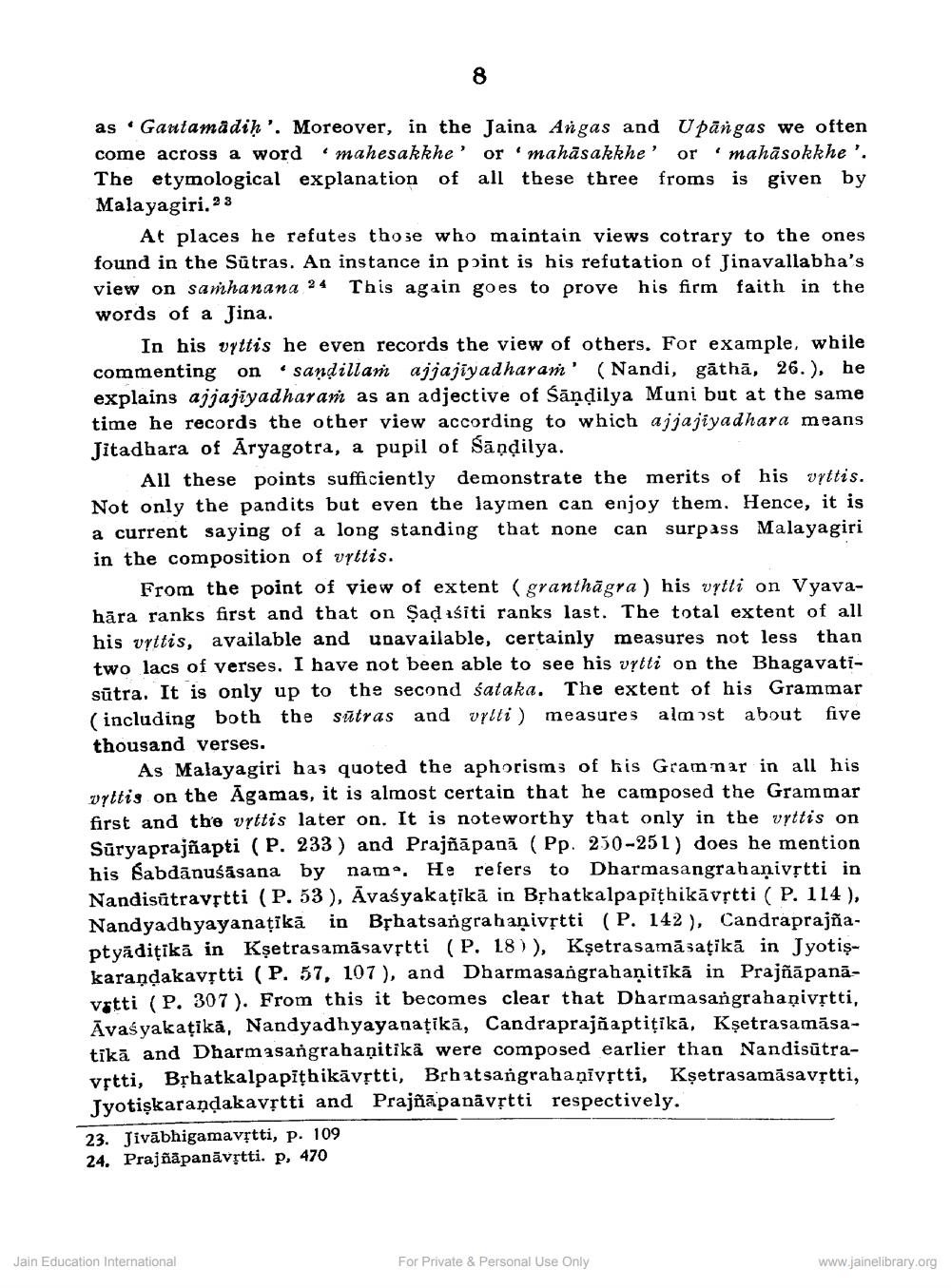________________
as Gautamadih'. Moreover, in the Jaina Angas and Upāngas we often come across a word mahesakkhe' or 'mahāsakkhe' or 'mahāsokkhe '. The etymological explanation of all these three froms is given by Malayagiri, 23
At places he refutes those who maintain views cotrary to the ones found in the Sūtras. An instance in point is his refutation of Jinavallabha's view on samhanana 24 This again goes to prove his firm faith in the words of a Jina.
In his vyttis he even records the view of others. For example, while commenting on sandillam ajjajiyadharan' (Nandi, gāthā, 26.), he explains ajjajiyadharan as an adjective of śāndilya Muni but at the same time he records the other view according to which ajjajiyadhara means Jitadhara of Aryagotra, a pupil of Sāņdilya.
All these points sufficiently demonstrate the merits of his vyttis. Not only the pandits but even the laymen can enjoy them. Hence, it is a current saying of a long standing that none can surpass Malayagiri in the composition of vyttis.
From the point of view of extent (granthāgra) his vytti on Vyavahāra ranks first and that on Şad ušiti ranks last. The total extent of all his vyttis, available and unavailable, certainly measures not less than two lacs of verses. I have not been able to see his vytti on the Bhagavatisūtra. It is only up to the second śataka. The extent of his Grammar (including both the sūtras and vilti) measures almost about five thousand verses.
As Malayagiri hau quoted the aphorisms of his Grammar in all his vyttis on the Āgamas, it is almost certain that he camposed the Grammar first and the vyttis later on. It is noteworthy that only in the výttis on Suryaprajñapti (P. 233) and Prajñāpanā (Pp. 230-251) does he mention his Sabdānusāsana by nam. He refers to Dharmasangrahanivștti in Nandisâtravrtti (P. 53 ), Āvaśyakațikā in Bșhatkalpapițhikāvștti (P. 114 ), Nandyadhyayanaţikā in Bțhatsangrahaņivștti (P. 142 ), Candraprajñaptyādiţikā in Kșetrasamāsavrtti (P. 18 ) ), Kșetrasamāsaţikā in Jyotişkarandakavștti (P. 57, 107), and Dharmasangrahaņitīkā in Prajñāpanā. vetti (P. 307). From this it becomes clear that Dharmasangrahaņivștti, Āvasyakatika, Nandyadhyayanaţikā, Candraprajñaptiţikā, Kşetrasamāsatīkā and Dharmasangrahaņitikä were composed earlier than Nandisūtravrtti, Bșhatkalpapițhikävștti, Brbatsangrahaņivștti, Kșetrasamāsavstti, Jyotişkarandakavștti and Prajñāpanāvștti respectively. 23. Jivābhigamavrtti, p. 109 24. Prajñāpanāvrtti. , 470
Jain Education International
For Private & Personal Use Only
www.jainelibrary.org




